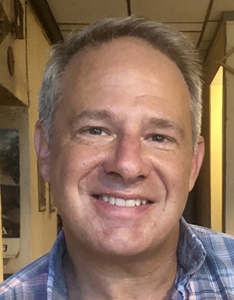Specifically Speaking with Jeff Smith Principal and VP of TEECOM, based in Oakland, Calif.

By Paul Ragusa
Updated Wed September 26, 2018
 What kinds of systems do you design/specify and what services does the company provide?
What kinds of systems do you design/specify and what services does the company provide?
Our security design/engineering/consulting service offerings include:
Services
- Physical threat/risk assessment of facilities
- Survey/assessment of existing security systems and mitigation strategies
- Crime prevention through environmental design (CPTED) assessment of design documents or physical locations
- Peer review services
- Project design/build criteria
- Detailed project design/bid/build packages
- Project specifications
- Opinion of probable construction cost (OPCC) development
- Value engineering services
- Project management
- Commissioning/acceptance testing services
- Request for proposal development
- Product research and selection services
- Development of maintenance agreement programs
- Development of security system design standards/guidelines
- Project drawing services (AUTOCAD, BIM, REVIT)
Systems
- Access control and alarm monitoring system
- Video surveillance system including license plate recognition (LPR) and analytics
- Intrusion detection system
- Security communications systems (intercom, entry phones, blue light phone)
- Visitor management system
- Programmable logic control (PLC) systems
- Wireless duress and alarm systems
- IT infrastructure (cabling, pathways, IDF/MDF room)
- Design of active network (Power over Ethernet (PoE) switches, servers, storage, uninterruptible power supply (UPS))
- Turnstiles/mantraps
- Asset and people tracking systems
- Security operations center (SOC) design including furniture
- Security system and software integrations and interfaces to: Electrical power; IT network; parking controls including gates/coiling grilles; electrified locking door hardware; elevators; and human resource databases
What vertical markets does the company specialize in? Any interesting projects that you can mention?
Our security systems design services serve the following markets: Corporate office space and campuses; health care; education; courts including criminal justice; data centers; parking structures; transportation; and civic/government.
Some notable projects include the Lucile Packard Children's Hospital Stanford Expansion and the Oakland International Airport Terminal 1 renovation, as well as work with UC Berkeley, Airbnb Headquarters and 390 Main Street BAHA Headquarters, to name a few.
How did you get started in security, consulting, designing and specifying?
I worked for an electrical contractor wiring commercial projects after high school, and attended and graduated from DeVry Chicago. After college, I held various positions (technician, service manager, project manager, regional operations manager) with Sensormatic in four major cities during their years of explosive growth. At this point, I was given an opportunity to enter the consulting space and found a second career, which is incredibly rewarding. I've had the good fortune to work on very diverse and interesting project types with really smart people from industry leading organizations.
What are some new or emerging technologies you are seeing or specifying today?
The following bullets highlight industry specific trends we have identified and to which we're implementing across our diverse project spectrum today:
- Continued emphasis on cybersecurity hardening.
- Accelerated implementation of Open Supervised Device Protocol (OSDP).
- Further commoditization of security hardware with software being the only proprietary component.
- Moving beyond traditional access and video integration, to include multi-faceted integration and display of communication systems, building systems, employee databases, etc.
- Use of robots and drones to patrol, provide security presence, and reduce staffing cost.
What is your view on the industry moving forward?
Like many industries today, the security industry is experiencing tremendous growth, and there is not a workforce available to support its growth. The industry is handicapped because there's no formal security education path. Unfortunately, the established method, learning through experience, is currently not meeting the needs of the industry. The current paradigm inhibits the ability to move forward quickly and integrate new technologies and required skills out to all user levels, e.g. designers, contractors, manufacturers, and end users. Historically, work was delivered utilizing the design/bid/build project delivery method; today many projects are delivered using the design/build method, which results in many scope gaps or design deficiencies not being identified until work is already being implemented in the field.
The security industry must continue to find and embrace new technology and processes, e.g. software, mobility applications, delivery methods, etc. across all spectrums. Our work must continue to demonstrate increased value, and the value will result in higher compensation. Higher compensation will attract a more diverse and skilled workforce to the industry, and ensure our ability to deliver high quality, cost efficient, relevant technologies driven by standards and best practices.
Comments